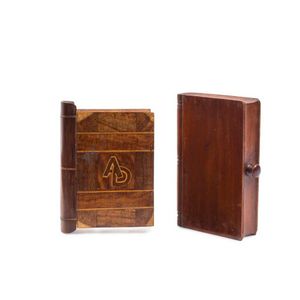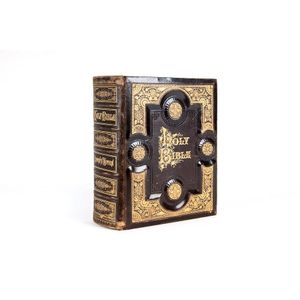Bugatti's Inlaid Wall Cabinet with Letter Racks
You must be a subscriber, and be logged in to view price and dealer details.
Subscribe Now to view actual auction price for this item
When you subscribe, you have the option of setting the currency in which to display prices to $Au, $US, $NZ or Stg.
- Inlay - Decorative patterns inserted into the main body of a piece of furniture, generally in wood of contrasting colour and grain, though brass, ivory, ebony, shell and sometimes horn have been used. Inlay may consist of a panel of well figured timber inset into a cabinet door front, geometric patterns, or complex and stylized designs of flowers, swags of foliage, fruits and other motifs. As a general rule, in pieces where the carcase is constructed in the solid, the inlay is relatively simple such as stringing, cross banding and herringbone banding. Where more elaborate and decorative work was required veneer was used. Inlay has been fashionable from at least the latter half of the 17th century, when a variety of elaborate forms were developed
This item has been included into following indexes:
Visually similar items

A late Victorian silver book form vesta, leaf engraved side panels, both overhanging plain ends as hinged lids, swivelling suspension and ring attached. Birmingham 1899 by Rolason Bros., noted vesta makers. Provenance: The Flower Family Collection. Length

Two Australian book boxes, cedar, blackwood, huon pine, myrtle and pine, 19th century 18 cm and 19 cm high

de RAPIN, Paul [1661-1725] translated by TINDAL Nicolas [1687-1774] 'The HISTORY of ENGLAND' Vol. 1 [1743], Vol. 2 [1743], Vol.3 [1744], Vol.4 [1745], Vol.4 Part 2 [1747] plus a volume of 65+ maps and charts by Searle or Basire 'For Mr Tindal's Continuatio

Antique holy bible: 19th century, published by the American Publishing Company [New York ]. Brown leather boards with gilt embossed decoration.
